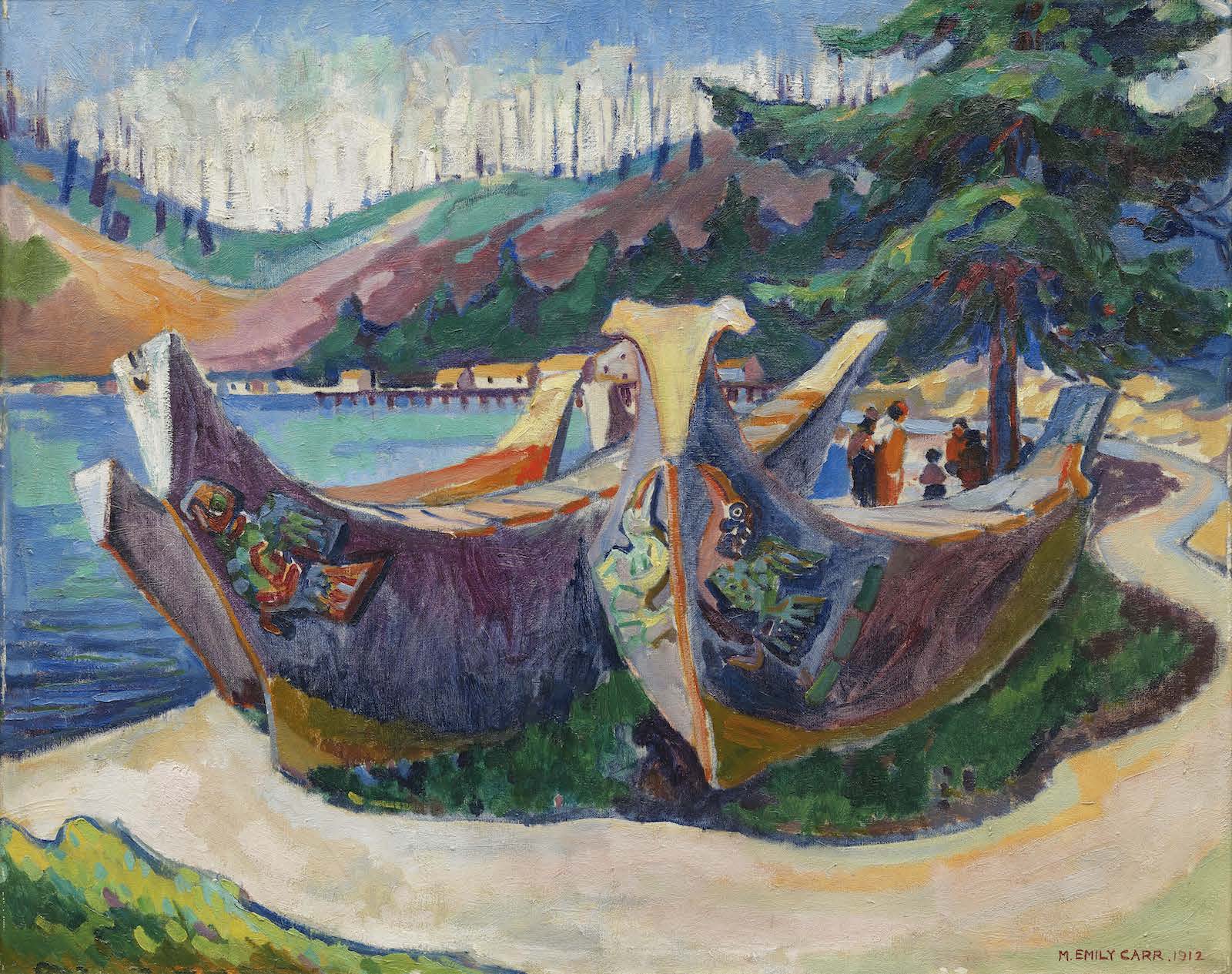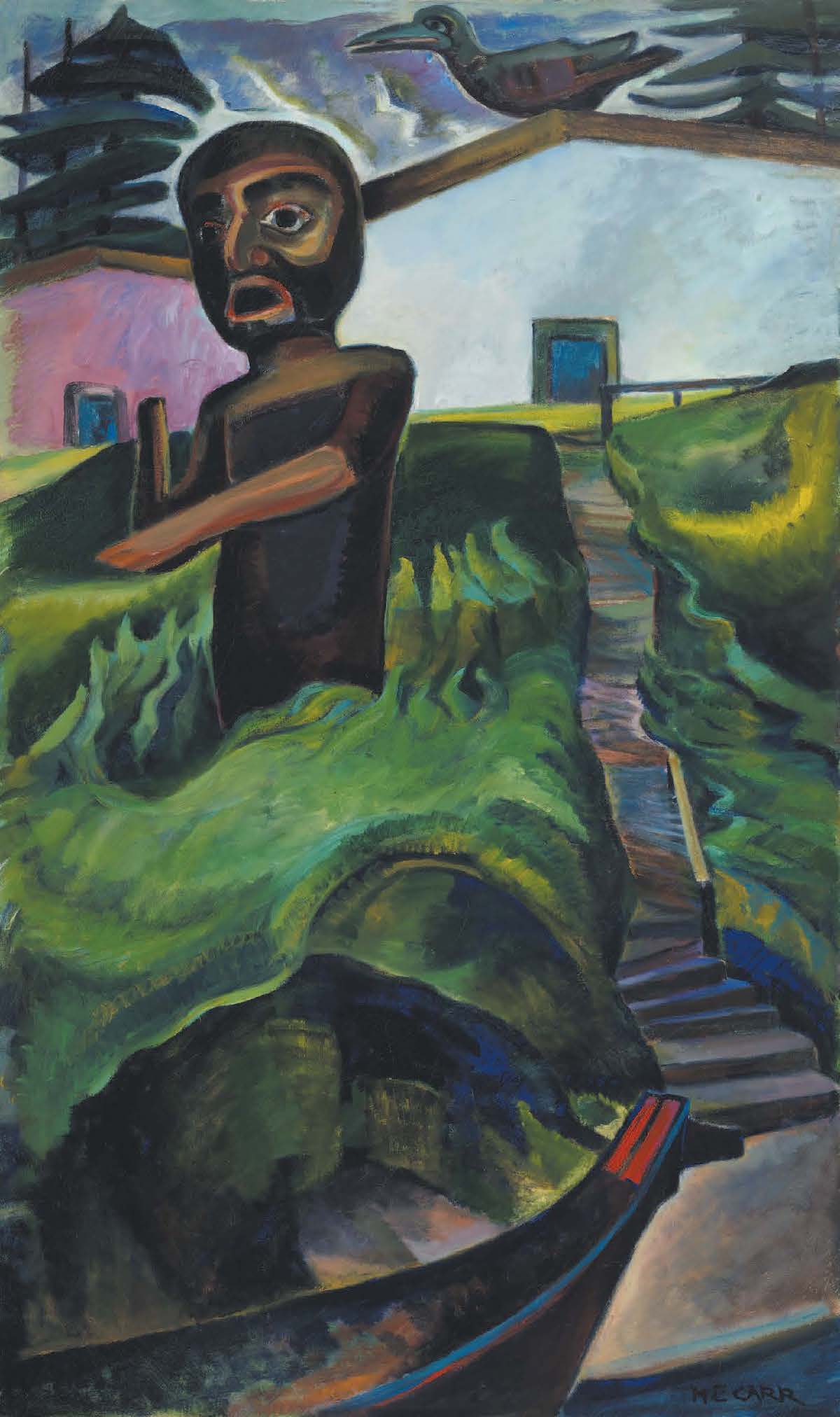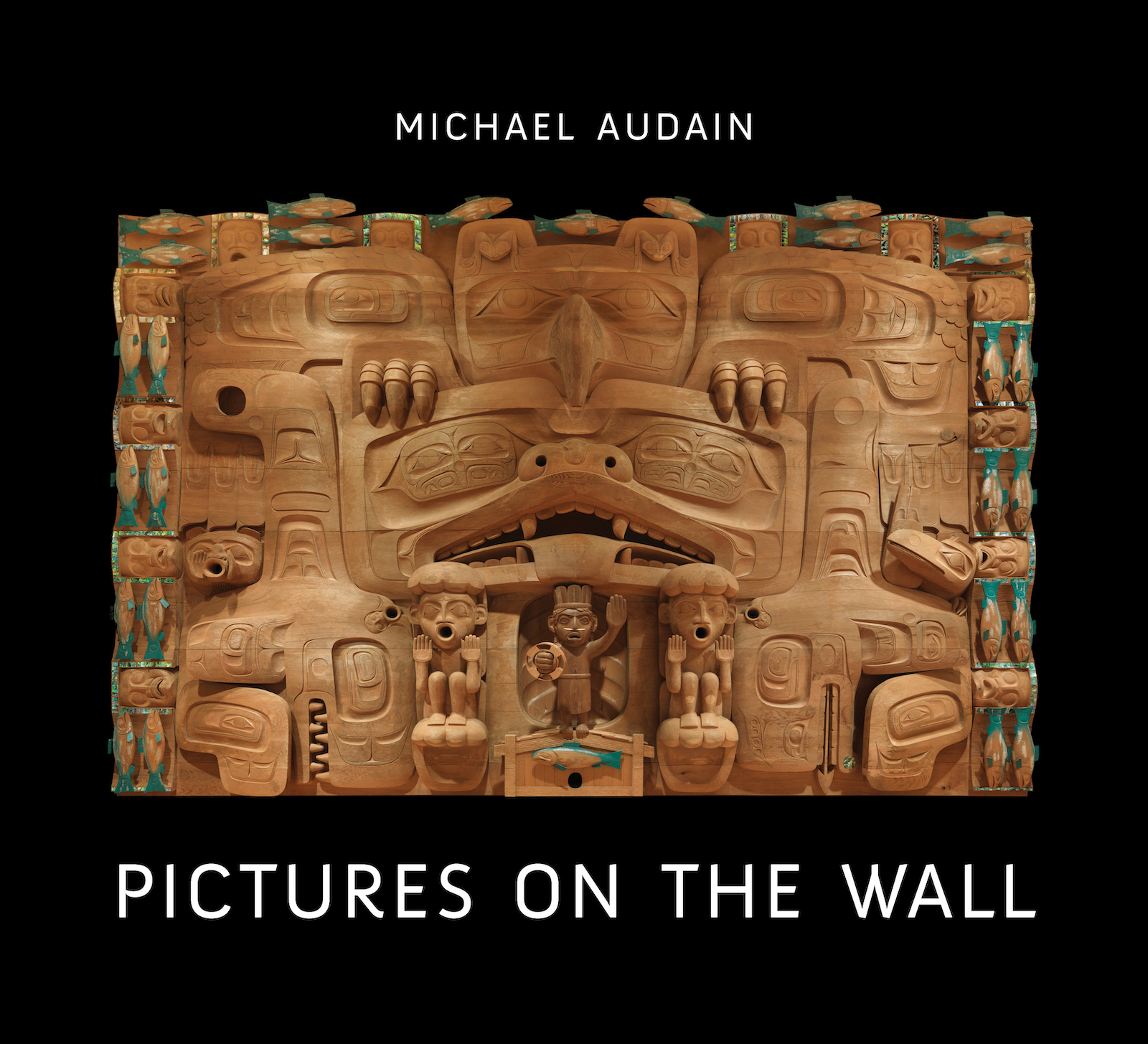In our Winter 2021 cover story, we profiled developer and art collector Michael Audain, whose expansive art collection—with his wife Yoshiko (Yoshi) Karasawa—now fills the Audain Art Museum in Whistler. Audain’s new book, Pictures on the Wall: Building a Canadian Art Collection, shares some of the stories behind his acquisitions, including these two paintings by Emily Carr.
Emily Carr, War Canoes, Alert Bay, 1912

Emily Carr (1871–1945), War Canoes, Alert Bay, 1912, oil on canvas, 84.0 × 101.5 cm.
One of Carr’s signature works, this dramatic 1912 painting of three war canoes on the beach at Alert Bay graphically demonstrates the transformation her immersion in French painting brought about. In 1908 she had painted exactly the same scene, producing what one critic called “a tidy and precise Victorian watercolour.” In this painting, made on her return from France four years later, she repaints the scene, exaggerating the curvaceous shapes of the canoes, simplifying detail and drenching the scene in vibrant purples, oranges and greens, creating a far more dramatic effect.
I was very attracted to the painting when it came up at a Heffel auction in Vancouver back in May 2006. The bidding went higher than I had imagined and at the conclusion I found that I had set a new record for a Carr at auction. It says something about our values that the only time news about art reaches the street is when a piece changes hands for a big price tag, which is usually reported with an undertone suggesting this was a foolish waste, and this case was no different. On a visit to Victoria shortly after the auction, Yoshi asked our taxi to stop for a brief look at Emily Carr’s original home on Government Street, now a heritage building. While we were there a horse-drawn carriage pulled up and we heard the amplified driver regale his passengers, “That’s the house where the crazy old painter Emily Carr lived. She used to walk around Victoria pushing a baby carriage with a dog and monkey in it.” Getting back into the taxi I asked our driver if he had heard what the ignorant carriage driver had said. He replied, “Yes, but there’s someone even crazier in Vancouver who a couple of weeks ago paid over $1 million for one of that woman’s paintings.”
Emily Carr, The Crazy Stair (The Crooked Staircase), c. 1928–30

Emily Carr (1871–1945), The Crazy Stair (The Crooked Staircase), c. 1928–30, oil on canvas, 110.2 × 65.7 cm.
This painting is arguably among one of Emily Carr’s most important, since it combined her early interest in Indigenous culture with her focus on the forest landscape, her greatest work. The setting is most likely one of the Kwakwa̱ka̱ʼwakw villages in Knight Inlet that she visited in her early days. For forty years I had been admiring the picture where it hung in a dimly lit recess as one descended the staircase in that bastion of privilege known as the Vancouver Club. It had been donated in the 1950s by H.R. MacMillan, chairman of the forest products giant, MacMillan Bloedel Limited. Perhaps it was the power of the welcome figure emerging out of the landscape that intrigued me so, but over the years I could never leave the club without pausing for a minute to pay my respects to the painting. It was far and away the best painting in the club, which, unlike similar clubs in Toronto and Montreal, did not see fit to endow their premises with a decent art collection, another indicator of the deficient awareness of culture on the West Coast.
I was surprised one day when I received a phone call from the chairman of the club, wanting my opinion about how best to sell the picture, in order to raise money for a new kitchen. The plan was to replace the original with a giclée print as a reminder of H.R. MacMillan’s generosity, something he assured me met the approval of the MacMillan family. I asked him if he thought the club might be persuaded to spend at least 50 percent of the proceeds on some contemporary West Coast art for the club walls. He responded that while he thought this would be a grand idea, it would be up to the membership. To my knowledge, this never came to pass.
The outcome of the story is that The Crazy Stair appeared in November 2013 at the Heffel Fine Art Auction where, given my history with the painting, I felt obliged to keep bidding until I finally took it at $3.4 million, still at time of writing a record auction price for an Emily Carr painting. It is a wonderful painting that looks great in its professionally designed museum installation at Whistler, but I confess to missing the moody ambience it had when beheld in the dim light of the Vancouver Club stairwell.
Excerpted from Pictures on the Wall: Building a Canadian Art Collection by Michael Audain, © 2023. Reproduced with permission from Douglas & McIntyre. Read more stories about the arts.









